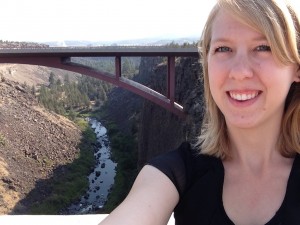 When the projects were reveled for the 2013 Community Planning Workshop (CPW), I saw that there was one to update a Natural Hazards Mitigation Plan (NHMP). I didn’t know what an NHMP was, but I have always had a deep fascination for the power of nature. I am the kind of person who goes onto the U.S. Geological Survey (USGS) earthquake page for fun, and who looks up maps of past lahar flows and 100 year floodplains to make sure the house I’m about to rent isn’t located in dangers way. I jumped at the NHMP opportunity!
When the projects were reveled for the 2013 Community Planning Workshop (CPW), I saw that there was one to update a Natural Hazards Mitigation Plan (NHMP). I didn’t know what an NHMP was, but I have always had a deep fascination for the power of nature. I am the kind of person who goes onto the U.S. Geological Survey (USGS) earthquake page for fun, and who looks up maps of past lahar flows and 100 year floodplains to make sure the house I’m about to rent isn’t located in dangers way. I jumped at the NHMP opportunity!
I quickly learned that an NHMP is a plan that FEMA requires communities to update every five-years in order to remain eligible for federal mitigation funds. I also learned that mitigation is any action that can reduce the impact of natural hazards on a community. NHMPs look at a community’s level of vulnerability to natural hazards (for example: though looking at those floodplain maps I strangely enjoy so much), and probability of a hazard occurring. Knowing a community’s vulnerability and probability to a natural hazard gives us the level of risk a particular hazard poses. This knowledge is then used to develop mitigation action items to reduce the impact of hazards on the community. This can include anything from education to removing dead tree branches around power lines.
Our CPW project was to update the NHMP for Jefferson County in eastern Oregon (another reason I chose this project: to see some sunshine during the Oregon winter). A steering committee was assembled for the CPW team composing of people from community development, Fire and Rescue, community volunteers, and many more. They were extremely knowledgeable about the hazards their community had faced and were no strangers to hazard mitigation. Because of their past NHMP, they had received funding to move their city hall out of the floodplain. It was our job to update the document so they would still be eligible for additional projects.
The CPW team held a total of four county wide meetings to discuss the role of the steering committee, assess the risk that the county faces, develop action items, and discuss implementation and upkeep of the plan. We also held separate meetings with the cities of Madras and Metolius to develop action items specific to their community needs. My role extended to a summer internship with the Community Service Center where I continued working on the NHMP with Oregon Partnership for Disaster Resilience (OPDR). The NHMP was submitted to FEMA this past October with approval of the plan earlier this month (December). This project was really enjoyable for me and I learned a great deal about the NHMP process, what makes a good plan, and about working steering committees.
Stacy Ludington is a second year Master of Community and Regional Planning student at the University of Oregon, who plans to graduate in June of 2014. She is focusing on how the impacts of climate change affects how we plan communities, particularly climate related natural disasters. Originally from the east coast, she’s loving all that Oregon has to offer and plans to stay on the “left” coast after graduation.

